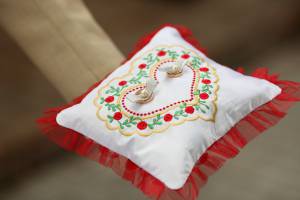Whether you live in Australia, Hungary, Brazil or Canada, the tradition of gifts during the holiday season is loved by everyone. Children and adults all love giving and receiving brightly wrapped presents. The character that brings those gifts might be Santa Claus here in North America, but he isn’t necessarily known by that name in other countries.
- France and Belgium – Pere Noel
- Brazil – Papai Noel
- Italy – Babbo Natale
- United Kingdom – Father Christmas
- Sweden – Jultomten (Christmas Brownie)
- Russia – Ded Moroz (Grandfather Frost)
- Hawaii – Kanakaloka
- Turkey – Noel Baba
Saint Nicholas, who is considered to be the original Santa Claus, was born in a Turkish town during the third century. He was a devout Christian. His family died in an epidemic when Nicholas was quite young, but they left him a great deal of wealth. He used his inheritance to benefit the needy and the sick. He became known for his generosity, his love of children and his concern for ships and sailors. Nicholas was made a bishop in the church.
Nicholas was persecuted for his faith, as were many Christians in this time period. He was imprisoned for a while because he was a bishop in the church. However, we do know that he attended the Council of Nicaea in 325 AD. This was the first Ecumenical Church Council, which was called to preserve the church. He died on December 6, 343 AD (December 19 on the Julian Calendar), and this date is now celebrated in his honor.
The custom of leaving gifts in the stockings or shoes is from a legend about Saint Nicholas saving three young girls who didn’t have a dowry. The family was poor, and the father didn’t have anything to offer prospective husbands for his daughters. It was possible that the girls would be sold into slavery, but three different times, a bag of gold was tossed into the family’s window and said to have landed in a shoe in front of the fire. The daughters were saved. Children began leaving stockings and shoes out and waiting for gifts from Saint Nicholas.
Thousands of churches are named for St. Nicholas. He is the patron saint of sailors. When Nicholas died, it’s said that manna formed in his grave. It was a liquid substance, believed to have healing powers. This magnified his legend. Both Protestants and Catholics celebrate his memory. He is a model of generosity and compassion.
Celebrating Santa Claus
Saint Nicholas, or “Sinnterklaas” as he is known in Dutch, came to North America as Europeans settled in the new land. Traditions became mixed up with so many cultural influences. Gift-giving is associated with Saint Nicholas and the Three Wise Men, or Magi. It was German and Scandinavian influences that favored celebrating December 24 as the holiday.
Traditionally, children hang stockings by a chimney, but in Brazil, where homes may not have chimneys, it’s common for shoes to be left outside to be filled with sweets. In Italy, La Befana, a Pagan character who arrives during the Christmas season, brings sweets and dried fruit to those children she deems good. All others get a lump of coal as a sign of her displeasure with their behavior.
Ded Moroz and his granddaughter Sengurochka (Snow Girl) come to the territories of Eastern Europe on a sleigh drawn by three horses. Ded Moroz rewards the honest and hardworking people with gifts and sweets. He punishes the ones who are lazy and immoral.
Take some time this holiday season to learn more about different customs around the world. It doesn’t matter whether you celebrate Hanukkah, Christmas, Yule or Kwanza. We all need to understand how our neighbors celebrate to appreciate diversity.





